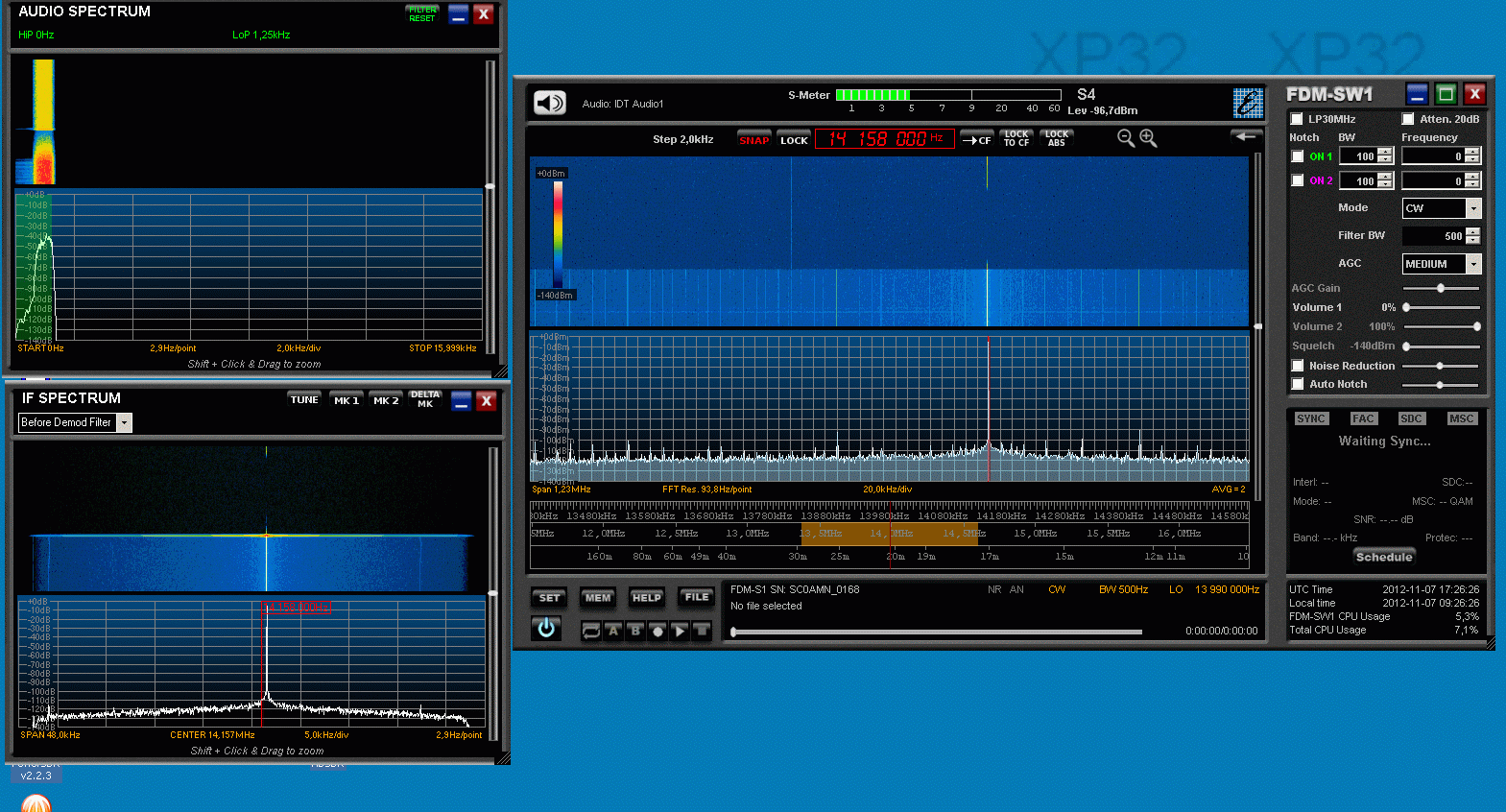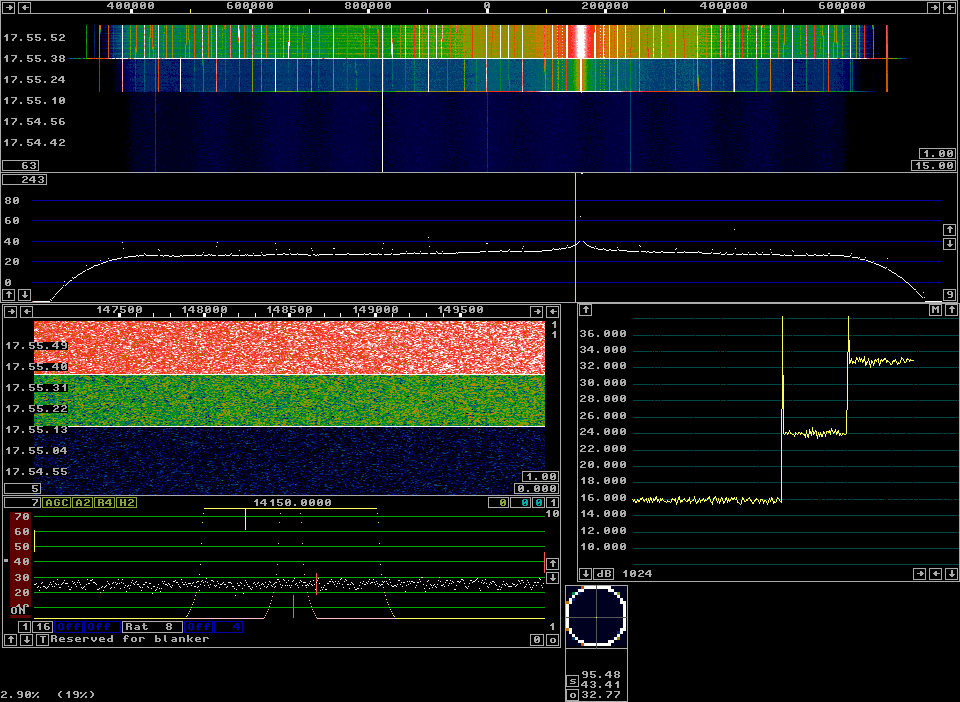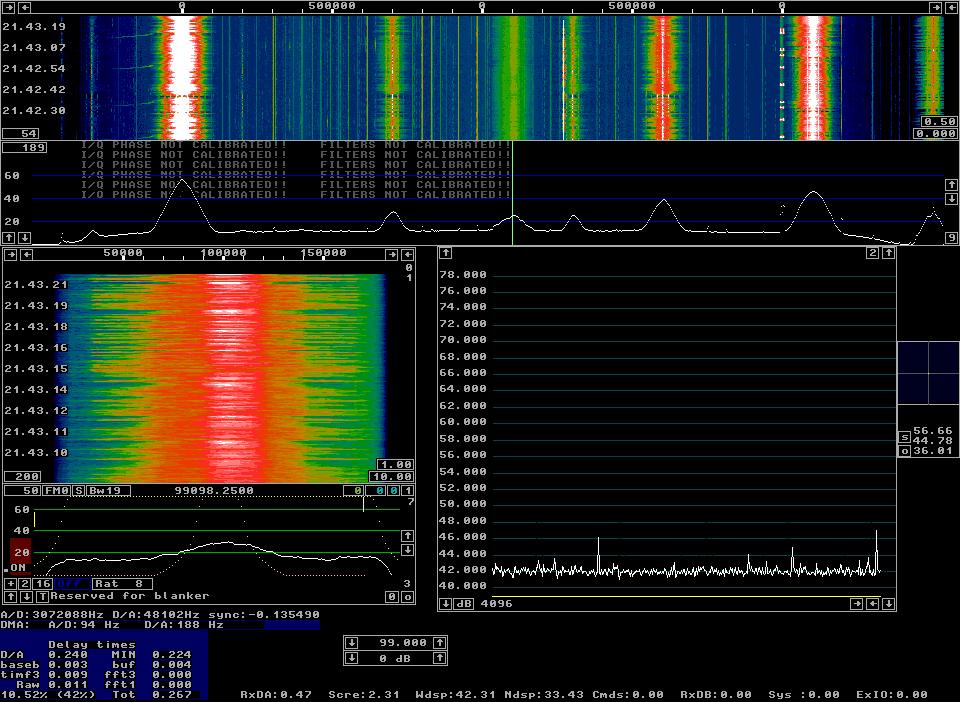
|
The ELAD FDM-S1 receiver is a direct sampling receiver
that runs its A/D converter at 61.44 MHz and that can
that can supply the sampling rates 192 kHz, 384 kHz, 768 kHz,
1.536 MHz and 3.072 MHz via USB to a computer.
Some tests were performed on 14 MHz. Figure 1 shows the screen of the ELAD software, ELAD FDM-SW1 running with default settings with a single signal on 14.058 MHz. The signal is an ultra-pure crystal oscillator. |

|
| Fig. 1. ELAD-FDM-SW1 running with default settings. The noise floor rises markedly when a signal 1 dB below A/D clip is inserted. |
|
|

|
| Fig. 2. The same signal as in figure 1 with Linrad as the SDR program for ELAD. The middle section with a 10 dB attenuator. |
|
Figure 2 shows the same thing with Linrad. The S-meter graph shows that the noise floor is lifted by 17 dB at a frequency separation of 10 kHz. Table 1 shows the noise floor at different separations. |
Separation Noise floor Dynamic range (kHz) (dBc/Hz) (dB in 500Hz) 10 -128.2 101.2 20 -130.8 103.8 50 -133.5 106.5 100 -135.2 108.2 200 -136 109 500 -136 109Table 1. Noise on the sampling clock seems to be the limiting factor for the ELAD dynamic range. |
|
The noise figure is 24.5 dB which means that the noise floor
is at -149.5 dBc/Hz with MDS in 500 Hz at -122.5 dBm.
The point of saturation is at -5 dBm but the potential
dynamic range of 117.5 dB is not obtained even at large
frequency separations.
A two tone test is shown in figure 3. Two signals of equal amplitude separated by 20 kHz were combined and sent into the ELAD receiver. |

|
| Fig. 3. A two-tone test with ELAD. |
|
The two-tone test with ELAD is similar to the two-tone test with SDR-14 (which should be the same as SDR-IQ.) Compare to figure 4 here: Two tone test of the SDR-14 To avoid interference due to false signals it is a good idea to use ELAD with a selective preamplifier with gain enough to bring the the total signal within the passband of the preselector to a level near the point of A/D clipping. Read more in the papers on SDR-14. ELAD provides the highest bandwidth of all SDR hardware I have tested in Linrad so far. (Nov 2012.) Fig 4 shows the screen with ELAD receiving FM in stereo mode. The sound quality is excellent even though HIFI enthusiasts might want to use bass, treble and/or an equalizer to set a suitable de-emphasis because Linrad sends the audio from the FM detector without it. |

|
| Fig. 4.ELAD sampling at 3.072 MHz with the center frequency set to 99 MHz. The 30 MHz low pass filter is not enabled. Many FM stations are visible and the sound quality is excellent in stereo mode. |
|
|